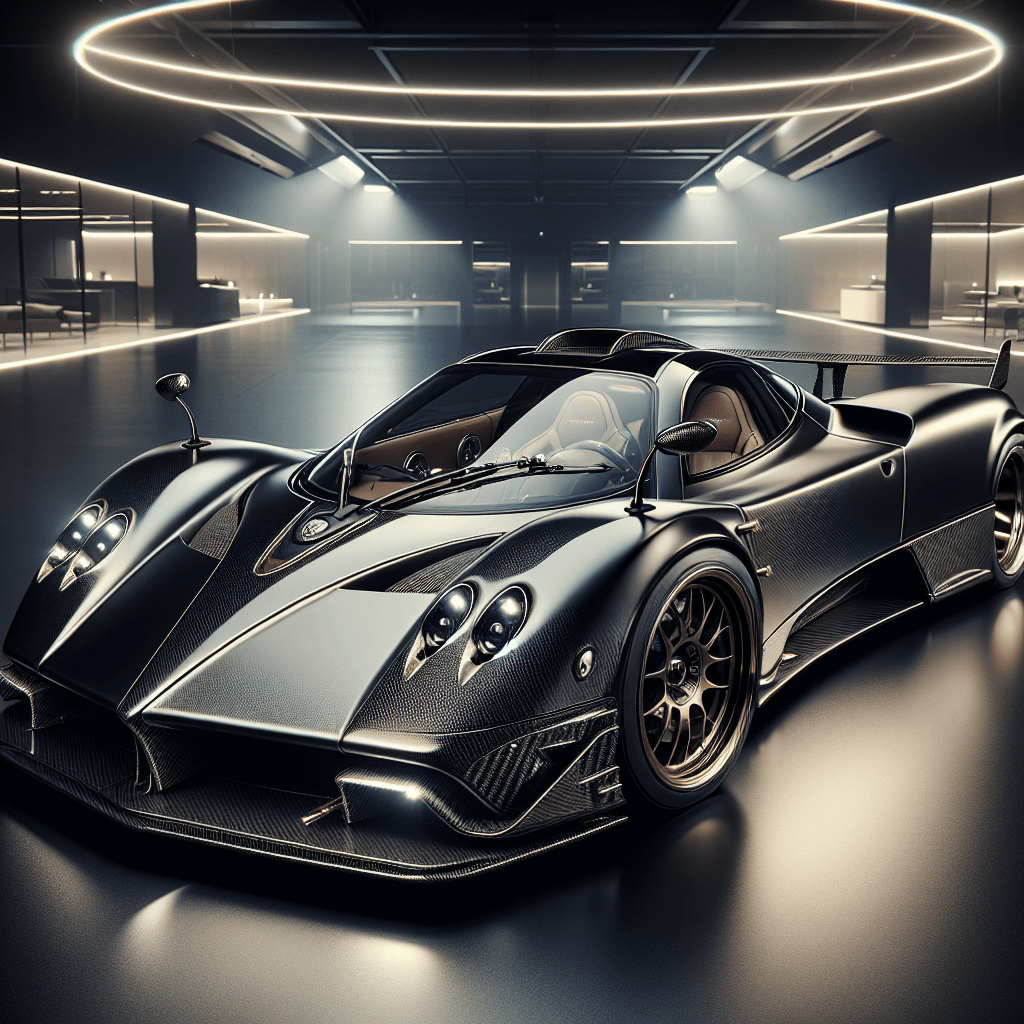How Pagani Refined the Zonda into a Track-Dominating Machine
The Pagani Zonda F stands as a pinnacle of automotive engineering and artistic expression, embodying the relentless pursuit of perfection by its creator, Horacio Pagani.
- The Genesis of Pagani Zonda: Crafting the Dream
- Design and Innovation in the Zonda F
- Performance Enhancements and Track Dominance
- Cultural Impact and Legacy of the Zonda F
- The Collectible Status of the Zonda F
- Concluding Reflections on the Zonda F’s Journey
The Genesis of Pagani Zonda: Crafting the Dream
The story of the Pagani Zonda is not just about automotive development; it’s a tale of passion, vision, and the relentless pursuit of craftsmanship. Horacio Pagani, the Argentinian founder of Pagani Automobili, was driven by a lifelong dream to build a car that combined perfect aesthetics with ultimate performance. The journey began in the early 1990s when Pagani laid down the groundwork for what would become one of the most exclusive and revered supercars in history.
Horacio’s approach was revolutionary, focusing on materials previously reserved for aerospace and Formula One. Carbon fiber, a cornerstone of the Zonda’s structure, was chosen for its high strength-to-weight ratio, enhancing both safety and performance. The design philosophy was clear: no compromises, no shortcuts.
The introduction of the Pagani Zonda C12 in 1999 set the stage, but it was the evolution to the Zonda F in 2005 that truly captured the essence of Pagani’s dream. Named after the legendary Formula One driver Juan Manuel Fangio, the Zonda F was a tribute to his influence on Horacio Pagani and his career.
Design and Innovation in the Zonda F
The Zonda F is not merely a car but a piece of kinetic art. Every line, shape, and contour was meticulously designed to achieve a perfect balance between form and function. The car’s exterior is characterized by its dramatic swoops and curves, which are not only aesthetically pleasing but also serve to channel airflow efficiently around the body, reducing drag and enhancing downforce.
Internally, the Zonda F boasts a cockpit that reflects Horacio’s obsession with detail. The use of materials like carbon fiber and brushed aluminum is complemented by luxurious leather, creating an environment that is both high-tech and inviting. The central console, with its array of gauges and switches, resembles the cockpit of an aircraft, emphasizing the Zonda’s high-performance capabilities.
Innovation extends to the Zonda F’s heart—the engine. Developed in collaboration with Mercedes-Benz AMG, the 7.3-liter V12 engine is a masterpiece of engineering, capable of delivering 602 horsepower. This powerplant is not just about raw power; it is also about the symphony of sounds it produces, from the deep growl at low revs to the piercing scream at high speeds.
Performance Enhancements and Track Dominance
The Zonda F’s performance is where it truly shines. Engineered to dominate on the track, it features a refined suspension system and a lightweight construction that allows it to handle corners with razor-sharp precision. The active aerodynamics system, including adjustable rear wings, helps maintain stability at high speeds, making it a formidable competitor against other supercars.
Track times underscore the Zonda F’s capabilities. At the Nürburgring, one of the most challenging race tracks in the world, the Zonda F set a lap time that placed it among the fastest road cars ever to grace the circuit. This achievement is a testament to the car’s exceptional design and engineering.
Moreover, the Zonda F is equipped with a sophisticated telemetry system that allows drivers to monitor various performance metrics in real time, further bridging the gap between road cars and race cars.
Cultural Impact and Legacy of the Zonda F
The Pagani Zonda F is more than just a supercar; it is a cultural icon that has left a lasting impact on the automotive world. Its introduction challenged other luxury car manufacturers to push the boundaries of what is possible in terms of performance and design.
The Zonda F has also made appearances in numerous media, from films to video games, further cementing its status as a pop culture phenomenon. Its unique design and incredible performance have made it a favorite among car enthusiasts and collectors worldwide.
Horacio Pagani’s dedication to art and engineering has inspired a generation of designers and engineers to pursue innovation without compromise. The Zonda F’s legacy is evident in every subsequent model released by Pagani, each of which continues to build on the foundations of its illustrious predecessor.
The Collectible Status of the Zonda F
The Pagani Zonda F’s rarity and craftsmanship have earned it a spot among the most coveted collectibles in the automotive world. With only 25 units produced, owning a Zonda F is a privilege enjoyed by a select few. Each model is highly personalized, tailored to the specific desires of its owner, which adds to its exclusivity and allure.
Collectors and enthusiasts cherish the Zonda F not only for its performance and beauty but also for its representation of peak automotive artistry. It is a symbol of what can be achieved when passion and expertise converge, making it a highly sought-after piece for any collection.
Concluding Reflections on the Zonda F’s Journey
The Pagani Zonda F represents a significant chapter in the history of automotive design and performance. Its development from a bold vision to a track-dominating machine highlights the power of innovation and the importance of heritage in the luxury automotive industry.
As we look back on the Zonda F’s journey, it is clear that this vehicle is not just a means of transportation; it is a moving sculpture that continues to inspire and captivate. For collectors, enthusiasts, and admirers, the Zonda F remains a timeless testament to the spirit of excellence that defines the Pagani brand.
For further exploration of Pagani’s legacy and the Zonda F’s place within it, consider visiting authoritative sources such as the official Pagani website.



